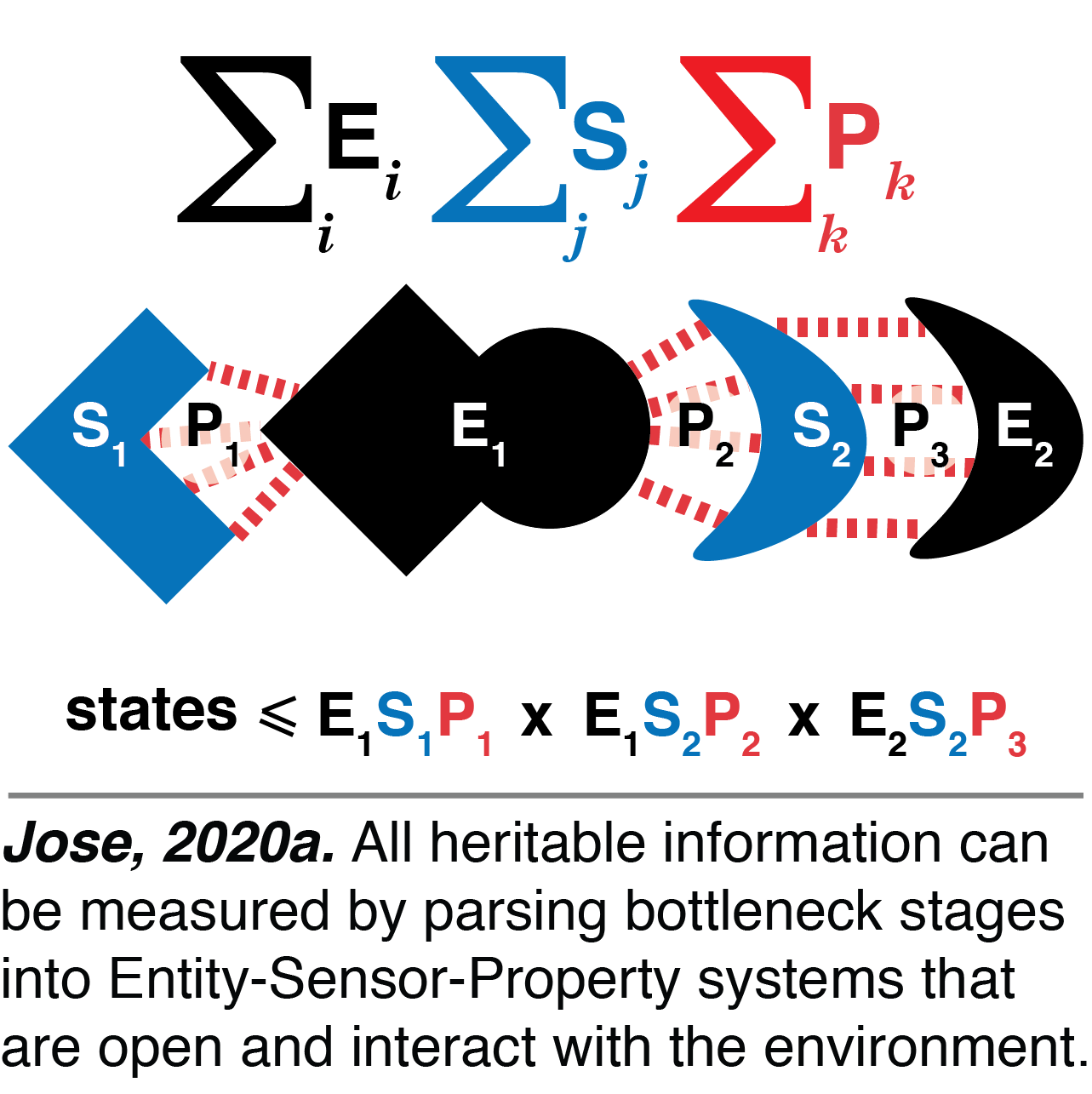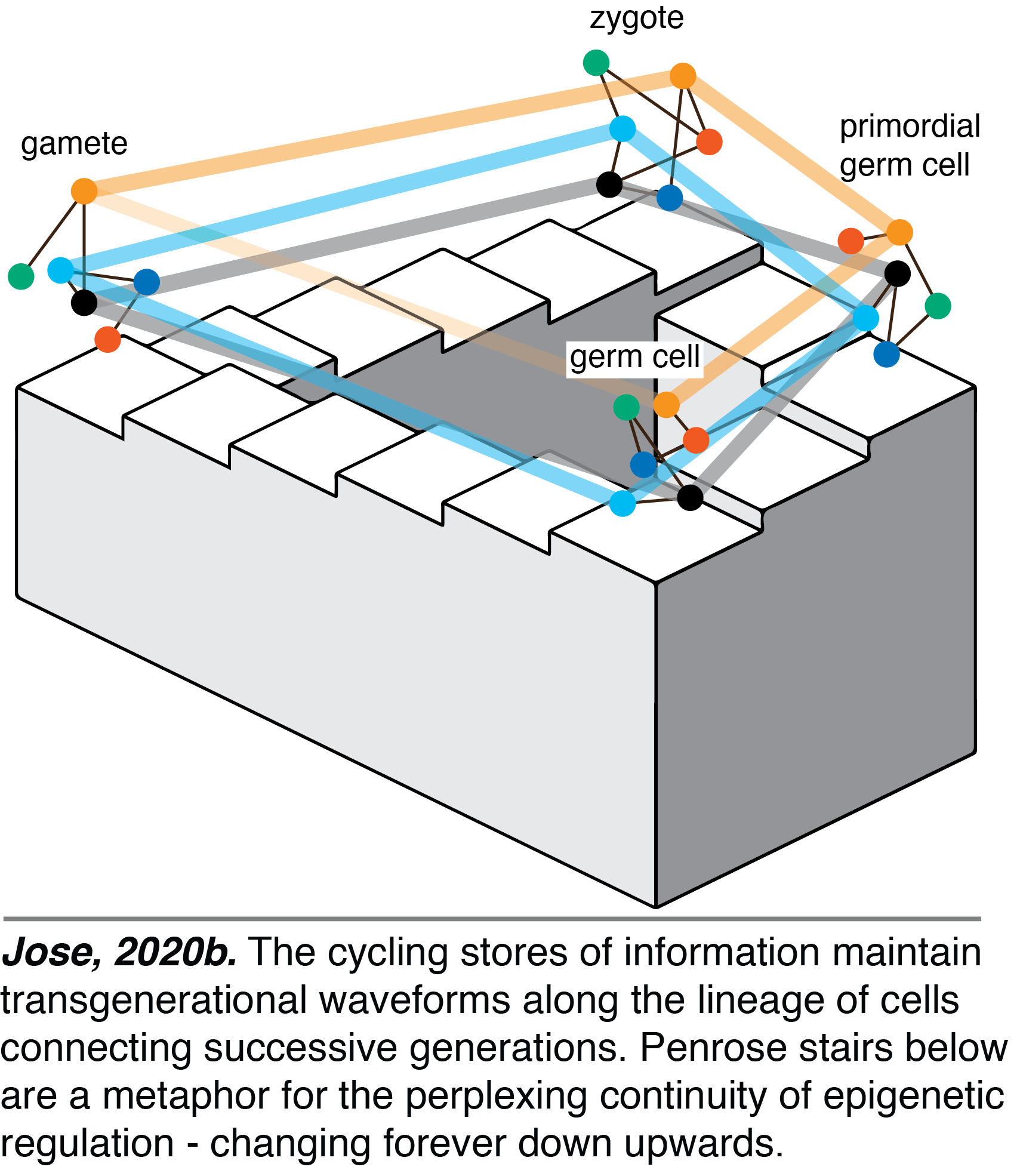Our conception of living systems provides the framework for analyzing experimental results and new experimental discoveries can prompt a revision of such frameworks. Below are articulations of current frameworks.
Cell Code: Life has diversified since its origin through bottleneck stages that separate successive generations. Each organism develops from the bottleneck stage, typically a single-cell zygote, with two distinct stores of information.
 One is the linear DNA sequence that is replicated during cell divisions. The other is the three-dimensional arrangement of regulatory molecules that dictates what is made using the DNA sequence and changes during development but returns to a similar configuration at the start of each generation (Jose, 2018). These two interdependent stores of information – one replicating with every cell division (e.g., gene sequence) and the other cycling with a period of one generation (e.g., gene regulators) – coevolve and together form the cell code for making an organism (see video). This perspective impacts our understanding of the origins of inherited diseases, the course of evolution, and the synthesis of new life.
One is the linear DNA sequence that is replicated during cell divisions. The other is the three-dimensional arrangement of regulatory molecules that dictates what is made using the DNA sequence and changes during development but returns to a similar configuration at the start of each generation (Jose, 2018). These two interdependent stores of information – one replicating with every cell division (e.g., gene sequence) and the other cycling with a period of one generation (e.g., gene regulators) – coevolve and together form the cell code for making an organism (see video). This perspective impacts our understanding of the origins of inherited diseases, the course of evolution, and the synthesis of new life.
Entity-Sensor-Property systems: We developed a single framework for parsing all heritable information in living systems. This framework includes cycling stores of information in terms of what an organism can sense about itself and its environment by defining entities, their sensors, and the sensed properties (Jose, 2020a). Entities include small molecules (ATP, ions, metabolites, etc.), macromolecules (individual proteins, RNAs, polysaccharides, etc.), and assemblies of molecules. While concentration may be the only relevant property measured by sensors for small molecules, multiple properties that include concentration, sequence, conformation, and modification may all be measured for macromolecules and assemblies. Each configuration of these entities and sensors is thus a potentially vast store of information that drives complex development in each generation. This Entity-Sensor-Property framework explains how sensors limit the number of distinguishable states, how distinct molecular configurations can be functionally equivalent, and how regulation of sensors prevents detection of some perturbations. Overall, this framework is a useful guide for understanding how life evolves and how the storage of information has itself evolved with complexity since before the origin of life.
While concentration may be the only relevant property measured by sensors for small molecules, multiple properties that include concentration, sequence, conformation, and modification may all be measured for macromolecules and assemblies. Each configuration of these entities and sensors is thus a potentially vast store of information that drives complex development in each generation. This Entity-Sensor-Property framework explains how sensors limit the number of distinguishable states, how distinct molecular configurations can be functionally equivalent, and how regulation of sensors prevents detection of some perturbations. Overall, this framework is a useful guide for understanding how life evolves and how the storage of information has itself evolved with complexity since before the origin of life.

Heritable Epigenetic Changes: We have expanded the conception of heredity to highlight the transgenerational waveforms maintained by cycling stores of information. Unlike heritable genetic changes, which are always associated with mutations in gene sequence, heritable epigenetic changes can be associated with physical or chemical changes in molecules or only changes in the system. The transmission of cycling stores along the continuous lineage of cells that connects successive generations creates waves of activity and localization of the molecules that together form the cell code for development in each generation (Jose, 2020b). As a result, heritable epigenetic changes can include any that can alter a wave such as changes in form, midline, frequency, amplitude, or phase.
Last updated: Jan 2021
Web Accessibility